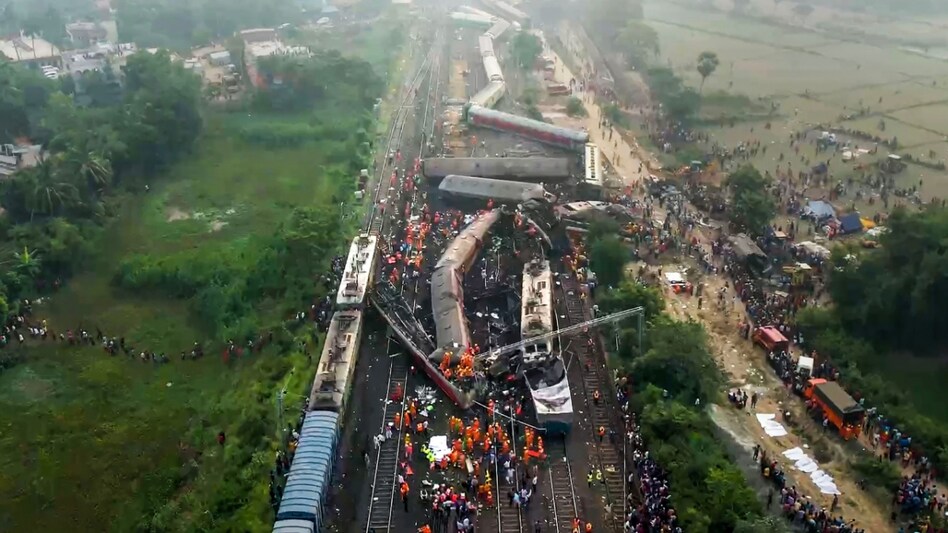Odisha train accident: Railway Board recommends CBI probe, announces Ashwini Vaishnaw Odisha train accident: Railway Board recommends CBI probe, announces Ashwini Vaishnaw
The Railway Board has recommended the CBI probe into the Odisha train accident, Railways Minister Ashwini Vaishnaw announced on Sunday.
 Odisha train accident: Railway Board recommends CBI probe, Ashwini Vaishnaw announced on Sunday
Odisha train accident: Railway Board recommends CBI probe, Ashwini Vaishnaw announced on Sunday
The Railway Board has recommended the CBI probe into the Odisha train accident, Railways Minister Ashwini Vaishnaw announced on Sunday. "Based on the information received so far, the Railway Board has recommended that the matter has to be handed over to CBI," said Vaishnaw. Railway officials also indicated that possible "sabotage" and tampering with the electronic interlocking system, which detects the presence of trains, led to the Friday accident, according to the news agency PTI.
The Railway Board said at least two railway lines at Balasore are expected to be operational again by 8 pm today. Restoration work is underway at the three-trains accident site. In a tweet, the Railway Minister said that the overhead electrification work has started at the accident site in Odisha's Balasore.
Earlier in the day, the railway minister said the root cause of the train crash and the people responsible for it had been identified. He said the railways was aiming to restore normal services on the affected tracks by Wednesday. He also said that the issue was of the electric point machine, a vital device for railway signalling, and electronic interlocking. The change that was made to electronic interlocking which led to the accident has been identified, Vaishnaw said while denying that the incident had anything to do with the anti-collision system "Kavach".
The railways said the Coromandel Express was "not over-speeding" and received the green signal to enter a loop line on which a goods train was stationary. Two key officials of the Railway Board -- Principal Executive Director of Signalling Sandeep Mathur and Member of Operation and Business Development Jaya Varma Sinha -- explained how the accident might have occurred. They described the functioning of the interlocking system which prima facie seemed to have been part of the problem which led to the accident, in which at least 288 people were killed.
Sinha said the direction, route, and signal were set for the Coromandel Express. "Green signal means that in every way the driver knows that his path ahead is clear and he can go forward with his permitted maximum speed. The permitted speed at this section was 130 kmph and he was running his train at 128 kmph which we have confirmed from loco logs," she said.
Published on: Jun 04, 2023, 6:48 PM IST
 Odisha train accident: Railway Board recommends CBI probe, Ashwini Vaishnaw announced on Sunday
Odisha train accident: Railway Board recommends CBI probe, Ashwini Vaishnaw announced on Sunday  Odisha train accident: Railway Board recommends CBI probe, Ashwini Vaishnaw announced on Sunday
Odisha train accident: Railway Board recommends CBI probe, Ashwini Vaishnaw announced on Sunday